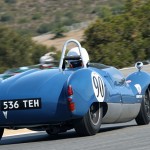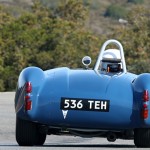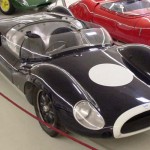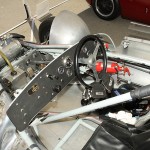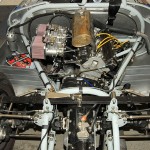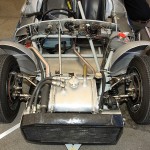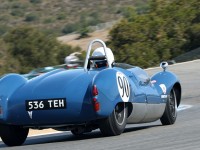
The Cooper Car Company was founded in 1946 by Charles Cooper and his son John Cooper. Together with John’s boyhood friend, Eric Brandon, they began by building racing cars in Charles’ small garage in Surbiton, Surrey, England in 1946. Through the 1950s and early 1960s, they reached auto racing’s highest levels as their rear-engined, single-seat cars altered the face of Formula One and theIndianapolis 500, and their Mini Cooper dominated Rally racing. Thanks in part to Cooper’s legacy, Britain remains the home of a thriving racing industry, and the Cooper name lives on in the Cooper versions of the Mini (BMW) production cars that are still built in England but are now owned and marketed by BMW.
The first cars built by the Coopers were single-seat 500cc Formula Three racing cars driven by John Cooper and Eric Brandon and powered by a JAP motorcycle engine. Since materials were in short supply immediately after World War II, the prototypes were constructed by joining two old Fiat Topolino front-ends together. According to John Cooper, the stroke of genius that would make the Coopers an automotive legend—the location of the engine behind the driver—was merely a practical matter at the time. Because the car was powered by a motorcycle engine, they believed it was more convenient to have the engine in the back, driving a chain.
Called the Cooper 500, this car’s success in hillclimbs and on track, including Eric winning the first post war motor race at Gransden Lodge Airfield, quickly created demand from other drivers (including, over the years, Stirling Moss, Peter Collins, Jim Russell, Ivor Bueb, Ken Tyrrell and Bernie Ecclestone) and led to the establishment of the Cooper Car Company to build more. The business grew by providing an inexpensive entry to motorsport for seemingly every aspiring young British driver, and the company became the world’s first and largest post-war, specialist manufacturer of racing cars for sale to privateers.
Cooper built over 300 F3 cars and dominated the category, winning 64 out of 78 major races between 1951 and 1954. This volume of construction was unique and enabled the company to grow into the senior categories; it was with a modified Cooper 500 chassis, a T12 model, that Cooper had its first taste of top-tier racing when Harry Schell qualified for the 1950 Monaco Grand Prix. Though Schell retired in the first lap, this marked the first appearance of a rear-engined racer at a Grand Prix event since the end of WWII.
The front-engined Formula Two Cooper Bristol model was introduced in 1952. Various iterations of this design were driven by a number of legendary drivers – among them Juan Manuel Fangio and Mike Hawthorn – and furthered the company’s growing reputation by appearing in Grand Prix races, which at the time were run to F2 regulations. It wasn’t until the company began building rear-engined sports cars in 1955 that they really became aware of the benefits of having the engine behind the driver. Based on the 500cc cars and powered by a modified Coventry Climax fire-pump engine, these cars were called “Bobtails.” With the center of gravity closer to the middle of the car, they found it was less liable to spins and much more effective at putting the power down to the road, so they decided to build a single-seater version and began entering it in Formula 2 races.
